Analysis: Modern firing training systems for marksmanship and shooting skills
More and more companies in the world propose their systems aiming at boosting military and security forces skills in marksmanship, sniping or simply “common” (or standard) shooting capabilities. Let’s review some of them.

Fort Drum Soldiers training with the Army's Squad Advanced Marksmanship Trainer (SAM-T). (Picture source U.S. DoD)
GAIM's system
GAIM, the subsidiary company of Aimpoint, is offering its Virtual Reality product for realistic hunting and shooting simulation and training at Enforce TAC 2019, the International Exhibition & Conference Law Enforcement, Security and Tactical Solutions for Police and Security, which was held in Nuremberg, Germany.
GAIM has reached a milestone in shooting simulation systems. The groundbreaking technology of the GAIM Virtual Reality Simulator gives soldiers and police officers the possibility to practice shooting and strategy in an authentic, immersive and flexible way. The hit zones replicate those that are used in real situations and the shooting techniques are in accordance with what is recommended by professional shooting instructors. The use of Aimpoint sights gives the opportunity to experience the concept of shooting with both eyes open.
The GAIM Virtual Reality Simulators are tailor-made complete kits, including hardware and software. They are truly compact transportable and easy to setup, either in small spaces or up to 8x8m, allowing up to three combatants to wirelessly and simultaneously cooperate. GAIM delivers an exceptionally unique and cost-effective solution, yet maintaining to notch quality.
In fact , GAIM has developed a virtual reality system that allows soldiers or police officers to practice training scenarios that can be adapted to create virtual combat situations using real weapons. The GAIM Virtual Reality product contains everything you to get started with state-of-the-art simulator software.
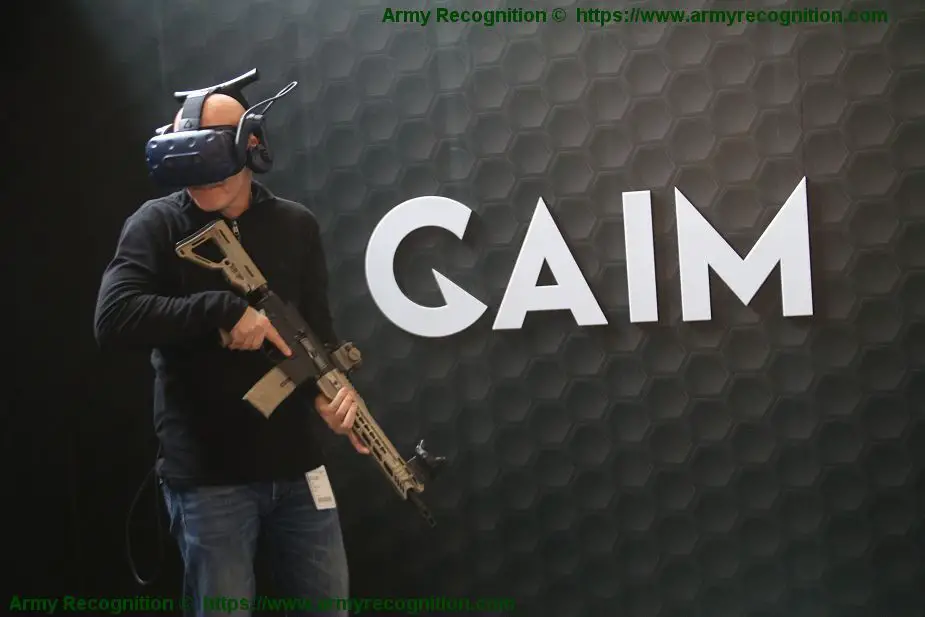
Rheinmetall’s system
Rheinmetall is producing laser duel training systems for the German Army, the order being worth nearly $22.9 million. The AGDUS HdWa -- or "Training Device, Duel Simulator, Small Arms" -- system is a leading laser- and wireless-supported duel simulation system based on Rheinmetall's Legatus family of products and supersedes existing first-generation Bundeswehr systems.
Under the contract with the army, the company will produce more than 2,000 laser transmitter units for small arms and 1,500 soldier target sets featuring "AGDUS passiv Soldat" laser sensors. The new technology is compatible with practically all standard-issue Bundeswehr infantry weapons, including pistols and assault rifles, the G28 and G82 sniper rifles, the MP7 submachine gun, MG4 and MG5 machine guns, and the AG40 automatic grenade launcher and simulators for hand grenades.
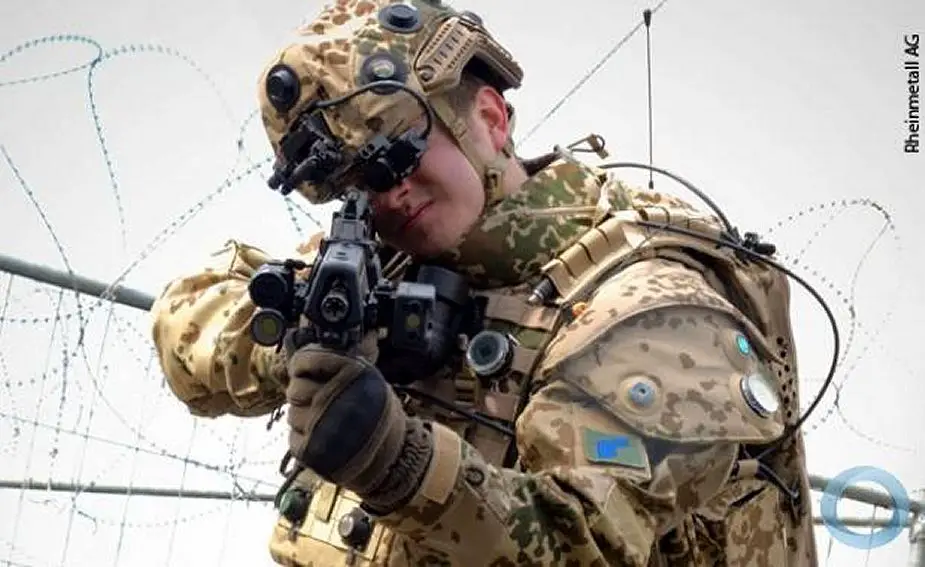
FN Herstal FN® Expert
The FN® Expert is a marksmanship shooting training system for carbine and rifle that provides instruction to both shooters (from beginner to already confirmed) and coaches. The simulation system focuses on training fundamental shooting skills (sight picture, breathing, trigger squeeze, etc.), building muscle memory and providing feedback following the shot. It is a wireless system capable of dry-fire and live-fire training on virtually any rifle or carbine.
The optical unit consists of Optical Measurement Part (OMP, in front) and User Interface Part (UIP), which includes main electronic board, rechargeable battery, buttons, buzzer, USB connector and graphic display. A cable replacement is available with a built-in Bluetooth module.
The FN Expert device can be mounted directly to a Picatinny rail of a carbine or rifle, either on top or on one of the two sides of the weapon. Instead of mounting the FN Expert device to the Picatinny rail, most usually the device is mounted above the barrel of the weapon. For mounting the device to the barrel, an optional barrel adapter is needed.

U.S. Army's Multiple Integrated Laser Engagement System (MILES)
The multiple integrated laser engagement system, or MILES, is used by the U.S. military and other armed forces around the world for training purposes. It uses lasers and blank cartridges to simulate actual battle.
Individual soldiers carry small laser sensors scattered over their bodies, which detect when the soldier has been illuminated by a firearm's laser. Each laser transmitter is set to mimic the effective range of the weapon on which it is used. When a person is "hit", a medic can use the digital readout to determine which first aid method to practice.
Different versions of MILES systems are available to both US and international militaries. The capabilities of the individual systems can vary significantly but in general all modern systems carry information about the shooter, weapon and ammunition in the laser. When this information is received by the target, the target's MILES system uses a random number roll and a casualty probability lookup table to determine the outcome. For example, a MILES transmitter emulating an M16 rifle cannot harm an armored personnel carrier (APC), but could still "kill" a commander visible in the hatch of the vehicle.
Vehicles are typically outfitted with a belt of laser sensors or individual wireless detectors. Dismounted soldiers often wear a vest or harness with sensors as well as a "halo" of sensors on their helmets. MILES systems can be coupled with a real-time data link allowing position and event data to be transmitted back to a central site for data collection and display. More sophisticated systems for tanks and APCs exist that use various techniques (including scanning lasers and coupled radio systems) to allow more precise targeting of armored vehicles.
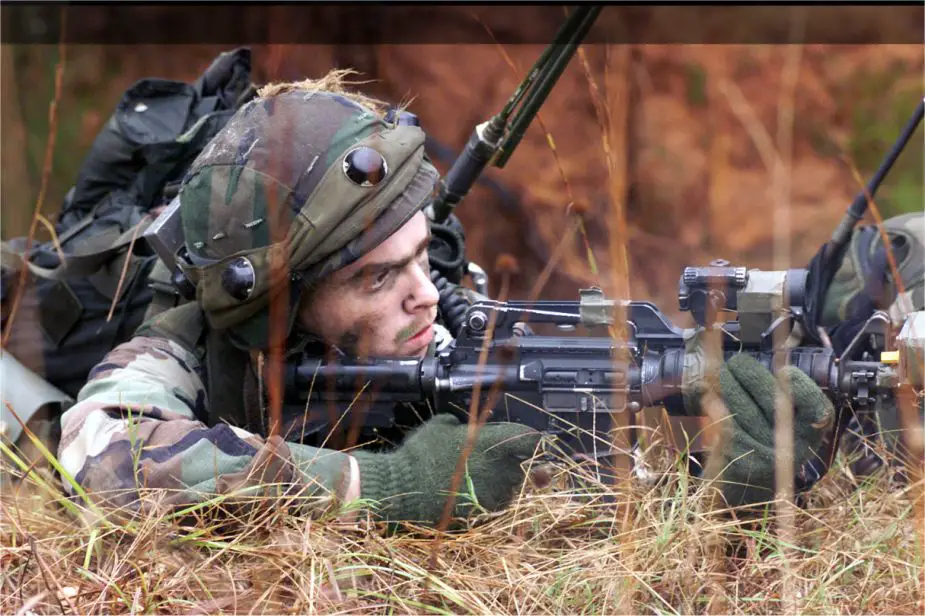
Augmented reality training on the horizon to give U.S. soldiers edge in combat
The U.S. Army's new battlefield heads-up display, the Integrated Visual Augmentation System, will revolutionize the way Soldiers prepare for future conflicts, the Army's vice chief of staff told lawmakers May 9, 2019. "This is cutting-edge technology," Gen. James C. McConville said before the House Armed Services Committee's subcommittee on readiness. "It is going to transform the way we train Soldiers and the way Soldiers operate in combat. We're excited about it."
As the Army looks to further modernize its force, it has focused on synthetic training environments to boost Soldier readiness and lethality. IVAS is a single platform that Soldiers and Marines use to fight, rehearse, and train. The Soldier Lethality Cross-Functional Team identified technology that makes it possible to deliver a single system across the force. Similar technology has been used by the Navy and Air Force, which have used it to train fighter pilots.
The IVAS system features advanced eyewear that places simulated images in a Soldier's view of real-world environments. The eyewear is connected to a small computer on the Soldier's body. The IVAS system is first and foremost a combat system that will increase Soldier situational awareness during missions, officials say.
Using 3-D mapping data and training management tools, users can build a virtual combat environment, allowing Soldiers to train in realistic combat scenarios. Soldiers can use their IVAS and other combat equipment to take part in many repetitions of simulated missions, McConville said, providing a greater range of training options than current testing and training ranges.
The Army plans to field the system by the end of fiscal year 2021. "What it's going to allow our Soldiers to do is to go into (augmented) reality and train on a mission they're about ready to accomplish," McConville said. "It's real. They can practice. They can rehearse, they can hit the sled a whole bunch of times and they can actually take the equipment that we're developing and go and execute the mission."
Similar to the Enhanced Night Vision Goggle-Binocular, or ENVG-B, the IVAS system will use thermal imaging without the green tint seen in the Army's current night vision goggles.
The IVAS system is just one of several measures the Army has taken to increase readiness in its formations. The service plans to raise its fitness standards by making the new Army Combat Fitness Test its physical test of record by October 2020.
The number of brigade combat teams has also increased and the number of non-deployable Soldiers has fallen from 15 percent in 2015 to 6 percent today.
Readiness remains a top priority in the Army's fiscal 2020 budget, McConville said, which fully funds home-station training and combat training center rotations. "Our No. 1 priority is readiness," he said. "We have a good historical example of last year, where we had timely, adequate, predictable and sustainable funding. We saw a great improvement in our overall readiness. This year, the budget that we asked for is the budget we need."
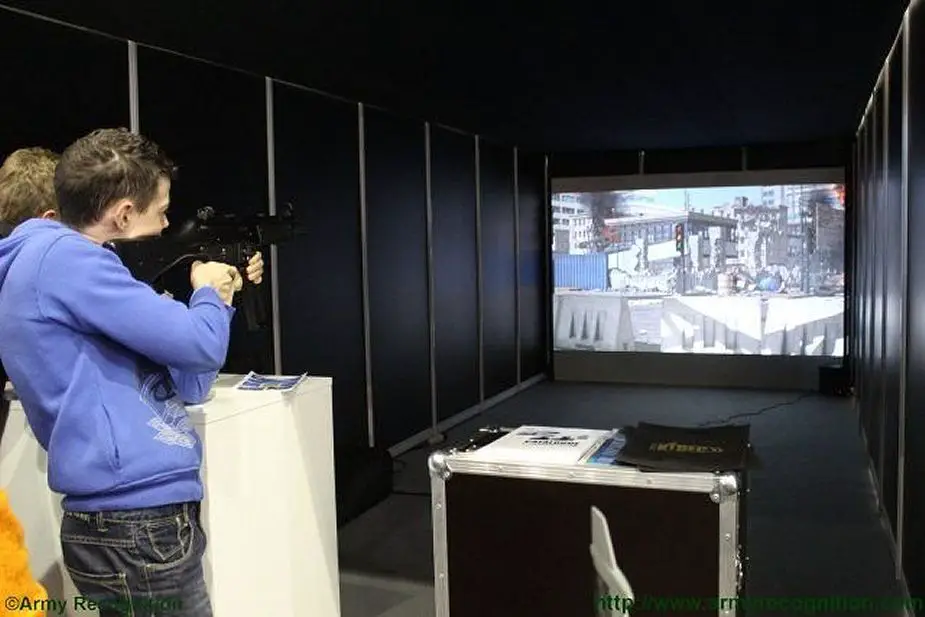
Saab's Ground Combat Indoor Trainer
The Ground Combat Indoor Trainer is a modular and scalable system that can be combined in several configurations to cover a variety of weapons including small arms and support weapons such as anti-tank weapons, including missiles. Main system features are the highly realistic and durable weapon replicas, the close-to-real-life virtual environment and the high accuracy.
GC IDT supports marksmanship training, initial combat training, combat training and judgmental training. In all types of training, the feedback is generated instantly. In skills training, focusing on the procedural memory, repetitive training is performed and impacting variables are set to optimize the learning. By involving both the procedural memory and declarative memory in decision-making training and combat training, decisions can be corrected directly and outcome from one decision can be measured and
compared to the outcome of another decision.
Both humans and vehicles in GC IDT has hit areas with different level of protection and correlating reaction when hit. By this decision making includes an initial point of aim and decision of re-engagement.
Saab offers OEM trainers for Carl-Gustaf, AT4 and NLAW. The trainers fully correlate to customer’s configuration including type of sights and ammunition.
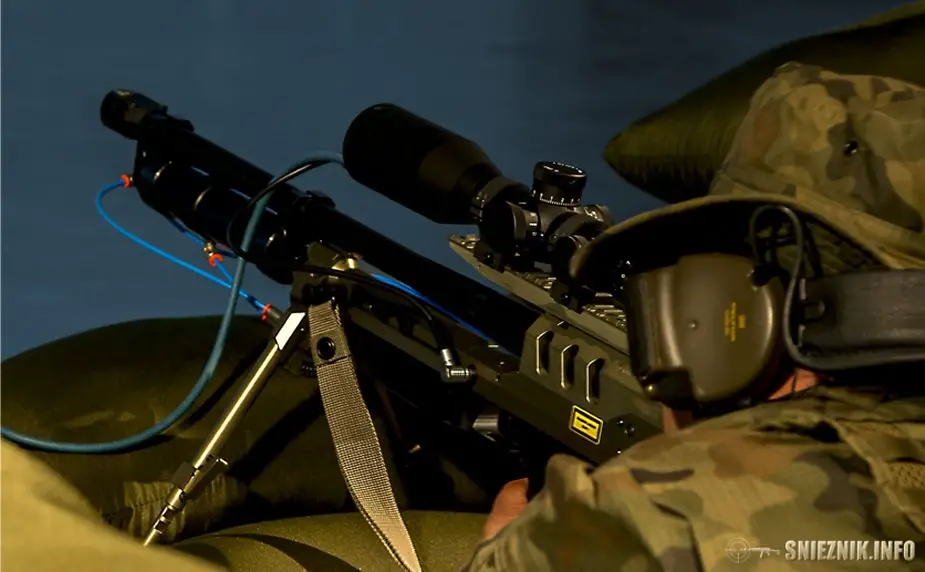
Snieznik weapon and kit simulators
In their practicing–training system for simulation of small arms shooting Snieznik, each weapon simulator is made on the basis of the real firearms. This weapon was previously deprived of combat features and equipped with appropriate devices, which are responsible for the proper cooperation of weapon simulator with the system and put realism into its operations.
Simulators are taking into account various elements:
- appearance (dimensions and weight), construction and handling identical as in the actual combat weapon;
- high level of operating realism achieved by appropriate simulating of weapon functionality (high-intensity sound of the shotgun, mechanism movement during reloading, recoil, the realistic operation of fire type switches and safety catches, mechanical and optical viewers),
wireless communication with the system;
- pneumatic overload system;
- built-in tilt sensor (CZP – Czujnik Przechylenia) and pressure sensor (CZD – Czujnik Docisku);
- leading the simulated fire with maintaining ballistic curves (same as real).
Filleing with CO2 magazines provide the kind of recoil that is made during the shot, characteristic for the respective type of combat weapon. Pneumatic reload system allows to donate a limited amount of shots for the type of magazine.
Wireless communication of weapon Simulator with the system is provided by usage of Weapon Communication Module (MKB – Modul Komunikacji Broni). It is a handy, compact, electronic device that connected to the weapon simulator feeds it, manages its work and communicates by radio with a computer driver of practicing-training device. MKB is not assigned to a specific type or item, it works with any weapon simulator.
The system is equipped with special designed sensors that allow the instructor to monitor the behavior of training people, how do they build the shooting position and aim. This may be particularly useful in the training courses conducted with novice shooters. For this purpose have been developed tilt sensor (CZP – Czujnik Przechylenia) and pressure sensor (CZD – Czujnik Docisku).
Tilt sensor is used to control the current weapon simulator tilting to left and right. And the pressure sensor is designed for ongoing monitoring of tilt between rear of the weapon simulator and shooter shoulder.
These devices are mounted independently and can be used on any weapon simulator.
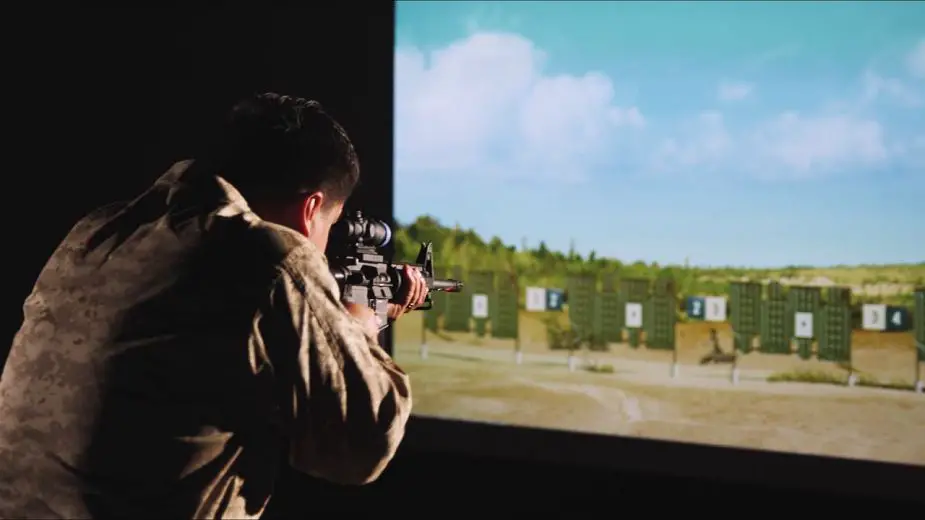
F.A.T.S – FireArms Training Simulator
FATS is an entirely interactive system that uses a computer program, a large screen and very realistic firearms that are loaded with computer chips instead of ammunition. It looks somewhat like a big video game, but it is definitely not a game, as explained by Shari Spivack on AmmoLand.
The F.A.T.S system is used in police and military training. It costs upwards of $150,000 and was designed to be used with many types of firearms – however, each type of firearm added to the system costs several thousand dollars. The software on this F.A.T.S system was designed to simulate police calls and stops and the firearms were all corded (i.e. attached) to the computer. There are systems where the firearms are not corded, and the guns have magazines filled with nitrogen gas to simulate recoil. With certain software, it is also possible to create scenarios where the suspects will not only be shooting back at you from the video screen, but the instructor can launch soft foam projectiles at you from a device called the Hostile Fire Simulator. In this case you would need to make use of available cover in the room to avoid being hit.
The instructor personalizes each scenario for the individual shooter and can increase or decrease the intensity of the situation to match the shooters ability level even as the situation progresses. For example, if the shooter is handling the scenario well, the instructor can increase the stress level by adding threats to the scene or having the shooter run out of ammunition.
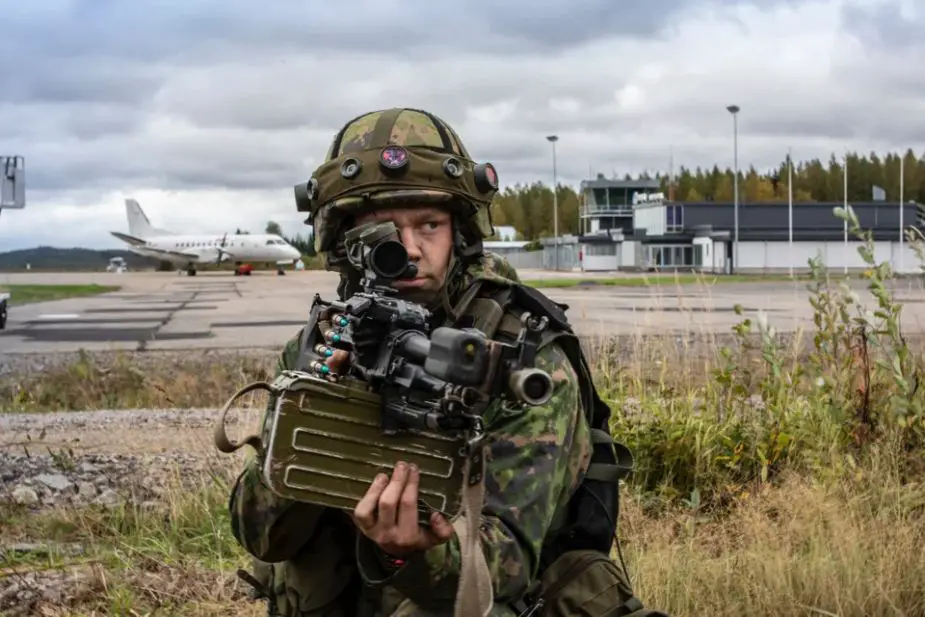
Finnish simulator-assisted systems enhance combat training
The Finnish Defence Forces’ selection of simulator-assisted training systems for conscripts consists of the KASI (Two-sided Combat Simulator) and VKY (Virtual Training Environment) system. The commissioning of both systems is part of the Finnish Army’s wider efforts to expand simulator activities with the aim of enhancing military training and improving the quality of combat training in a brigade-level units. The purpose of the units’ own KASI and VKY systems is to integrate simulator-assisted military training into the daily training of basic units to support other training methods and provide alternative implementations for tactical and combat technical training.
Over the course of 2016 and 2017, Army units have implemented the new KASI Manpack 300 simulator system to support combat training in field environments. In practice, the system is a streamlined and modernised version of the KASI system previously used by the Pori Brigade’s KASI unit.
The KASI Manpack 300 system is intended for the two-sided combat simulation of units roughly the size of a company. No fixed or heavy positioning equipment is necessary: in its most stripped-down configuration, it only requires a system briefcase carried by one operator, which collects data on events during the training exercise at a radius of approximately 1.5–3 km of the unit. Most commonly, the system is used from a simulator room built into a personnel transport van, which enables mobility across areas as necessary. The training troops are no longer required to be assembled to a centralised debriefing away from their operating area, as the system can be driven directly to them once the combat engagement is over. This enables quick feedback, so the exercises can be repeated as necessary based on what was learned.
The system’s operation is based on combatant vests equipped with GPS positioning capabilities, as well as vehicle-mounted simulator kits and the KASI Manpack 300 system. The movements and activities of combatants and vehicles can be monitored in real-time via the central processing unit’s map view. In addition to the vests and vehicle kits, the system includes weapon-mounted and field-installed simulator equipment, which can be used to represent the majority of infantry weapons systems.
The most visible component of the KASI system is the simulator vest worn by the combatants. It consists of harnesses which are equipped with prisms and attached to the helmet and combat vest. The purpose of the simulator vest is to receive the laser impulses transmitted by the various weapons systems, based on which the vest then indicates to each combatant and the central processing unit the extent and type of the damage caused by the weapons systems. In addition to the prisms, the vests are equipped with a GPS positioning device, speaker and attitude sensor.
Alongside the vests, the system includes a wide range of infantry weapons from assault rifles to anti-tank weapons and explosives, all featuring laser transmitters. All data generated during combat is stored on the vest’s central processing unit. The data of the central processing unit is then utilised to provide feedback to the troops being trained.
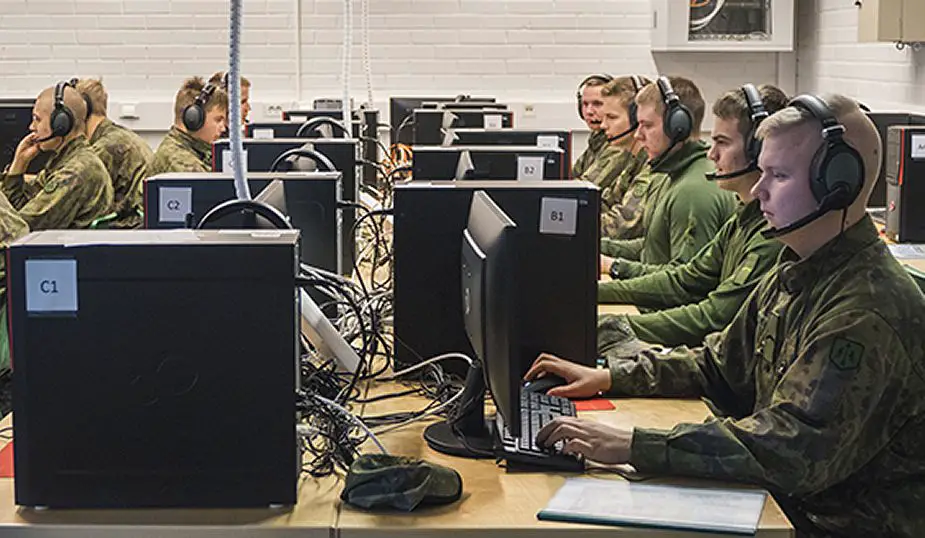
The software used for the virtual training environment is Virtual Battlespace 3 (VBS3), which is a professional version of the ARMA 3 computer game developed by Bohemia Interactive Simulations. (Picture source Finnish MoD)
The KASI system has been used to replace its predecessor, the TASI combat simulator, which has been utilised by many units. Providing each Army unit with its own KASI system enables training exercises to be arranged at a higher frequency and lower scale, since there is no dependence on other units’ schedules with regard to the simulators, as was the case with the older KASI system.
The intention is for basic units to use the equipment to support daily training, instead of large-scale combat exercises alone. As the components of the KASI system are mutually compatible, the unit-specific KASI simulators can also be used in more expansive nationwide exercises.
The Virtual Training Environment (VKY) has been adopted by brigade-level Army units on a corresponding schedule as the KASI Manpack 300 system. The previous VKY versions (e.g. VBS 2) have been used for years by the Armoured Brigade and the Reserve Officer Course.
The virtual training environment and its tools support training in a variety of military branches and combat activities. It can be used as a substitute for some classroom topics, and it is suited for educational practice before actual field exercises. In addition to this, applicable parts of it can also be used to test battle plans before carrying out a mission
The software used for the virtual training environment is Virtual Battlespace 3 (VBS3), which is a professional version of the ARMA 3 computer game developed by Bohemia Interactive Simulations.
VBS3 is a "first person shooter" computer game/simulator program, in which the users experience the virtual world with their own eyes and ears in a vast and diverse environment. The virtual world is based on reality, which has been modelled to be as true-to-life as possible, including physical limitations. The system is used in classrooms on commercial computers, which each trainee operates to guide a combatant reflecting his or her mission role on the computer screen.
VBS3 is commonly used for tactical and combat technical training by brigade-level units of the Finnish Defence Forces and Finnish Border Guard. The software is suitable for practising infantry combat, fire command and urban warfare, and can serve as a tool for training command activities during battle.
The simulator models the infantry, the most typical military vehicles and weapons, and aircraft. The system also enables the modelling of actual training terrain and operations in these areas.
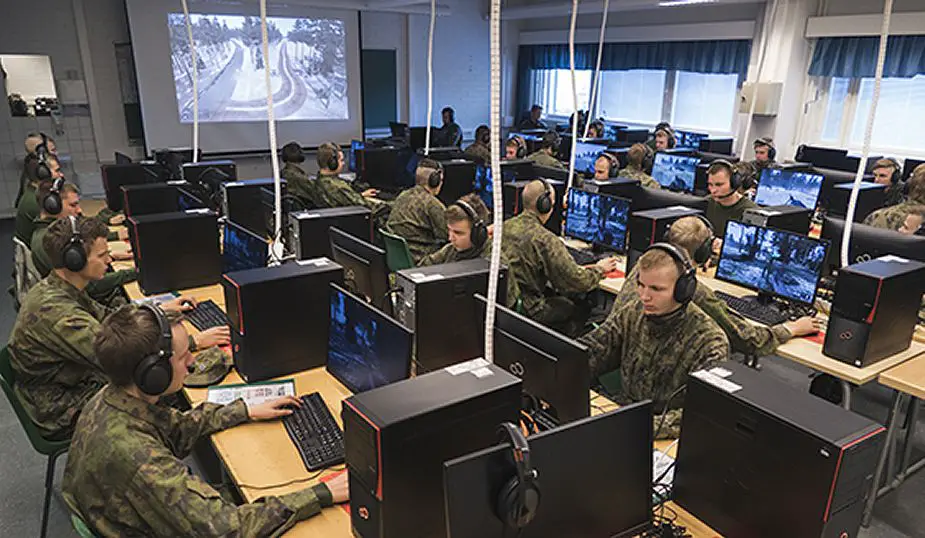
The VKY simulator makes it possible to practice any military activities that develop combat technical or tactical understanding. (Picture source Finnish MoD)
The VKY simulator makes it possible to practice any military activities that develop combat technical or tactical understanding. Experiencing all battlefield actors and phenomena in a concrete manner is far more efficient in developing this understanding than any elements affecting the units’ operations within the imaginary framework of day-to-day combat training.
In the virtual training environment, the transition from demonstration to action can be instantaneous without any limitations imposed by the physical world. This means that individual actions and performances can be repeated multiple times during a training session without expending any actual resource (vehicles, fuel, equipment, roads, environment, etc.).
Moreover, activities in a virtual environment are not restricted by any peacetime safety regulations, service safety norms or cost caps, which means that even wartime combat operations that are, for one reason or another, impossible to train for during conscript service or reservist refresher training can be practised, covering all relevant special features and attributes.
The virtual world also provides the opportunity for unique and independent applications, experimenting with otherwise hazardous aspects and making mistakes in a safe environment.
Even though VKY is a modern teaching tool, it still has its limitations. For example, it cannot replace basic training in weapon handling and firing. The system cannot be used to simulate firing stances, eye-hand coordination or the impact of weapon recoil on accuracy. This means that VKY is not a replacement for basic and combat firing exercises or field combat training.
In other words, the virtual training environment should not be used for any training that could be done more efficiently in practice in an actual operating environment.
Each brigade-level unit of the Army trains 2–4 conscripts for the virtual training environment’s support and maintenance tasks. These VKY conscripts serve as both 3D modellers and programmers. The 3D modellers create content for VBS 3, whereas the programmers implement their work in the actual simulator.
The practical duties of the VKY conscripts include creating content according to user needs (weapons, equipment, vehicles and maps), maintaining virtual training spaces, providing technical assistance and supporting the national VKY project.
In the Kainuu Brigade, the VKY conscripts also participate in operating the KASI Manpack 300 system and maintaining the KASI simulators during large combat exercises.
The simulator-assisted military training of the Finnish Army’s brigade-level units consists of practical training with the right equipment, the KASI system and VKY.
Depending on the unit, there is some variation in the focus areas and extent of simulator use. However, the most important thing is to realise that simulator-assisted and practical training form a comprehensive whole, wherein the goal is to reach the desired result in the most efficient way possible.
Observations and experience gained over time have shown that the basic skills of a soldier learned during the basic training period of conscript service should be practised through repetition in a concrete environment. In other words, simulators do not yield substantial benefits in this respect. As regards future training periods, however, simulator training should be presented to conscripts early on during the basic training period as one possible learning environment, so that it can be implemented directly as a fixed part of military education over the course of the upcoming training period.
During the special training period, the conscripts learn to conduct their own wartime duties as part of their squad, for which a virtual training environment is an excellent tool.

VKY provides the opportunity to learn about all capabilities and combat methods of one’s own unit without limitations. In addition to this, the system helps individual combatants to understand their own role and the significance of their squad through performing the relevant duties in a life-like operating environment.
Towards the end of the special training period, the conscripts proceed to practising and applying the basics of combatant and squad operations learned through VKY in unit-level field exercises by means of the KASI system. The system is used to test whether or not the unit can complete its assigned tasks on a practical level. KASI also enables data collection and feedback, based on which the unit’s competence deficits can be remedied before the beginning of the unit training period.
During the unit training period, the conscripts transition to operating as part of their platoon and company. Actual battlefield activities and dimensions affecting the unit’s operations are introduced at the same time. In the same way as during the special training period, the basics of operating as part of a larger force are learned through VKY, after which the lessons learned are practised in a field environment by using the KASI system.
During unit training period, VKY can also be used for practising tasks related to larger combat exercises before practical implementation with KASI.
Alongside practising combat techniques and testing battle plans, VKY is used after the basic training period to practice demanding combat firing. As the conscripts gain familiarity with firing situations and safety technical errors and deficits can be remedied during virtual training, the implementation of firing practice becomes much faster and safer for the personnel involved.
Although simulator-assisted military training brings efficiency and cost savings to conscript training, it cannot fully replace traditional military training, which includes a variety of areas such as physical education as well as training on weapons and firing. Simulator-assisted training provides a more meaningful and realistic environment for learning the basics, but it does not remove the necessity to practice the lessons learned and test unit capability in the field using actual equipment in conditions that are as realistic as possible.
Even though simulators will surely play an important role in the future training of capable wartime troops, we must understand that they are merely one training resource among many – not an all-encompassing solution to meet the needs of all military training.


























